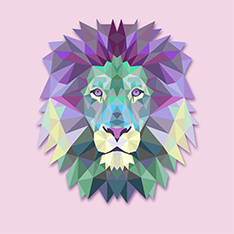Where to See the Northern Lights: A Comprehensive Guide
If you’re a fan of natural wonders and breathtaking experiences, seeing the Northern Lights should be on your bucket list. The Northern Lights, also known as Aurora Borealis, are a natural light display that occurs in the polar regions. The lights are a result of solar particles colliding with the Earth’s atmosphere, creating a stunning display of colors that range from green to pink to red.
If you’re wondering where the best place to see the Northern Lights is, the answer is not straightforward. The Northern Lights are a natural phenomenon, and their visibility depends on several factors, including solar activity, weather conditions, and light pollution. However, there are some places that are known to have a higher chance of seeing the lights. In this article, we’ll explore the best places to see the Northern Lights and how to photograph them.
When to See the Northern Lights
The best time to see the Northern Lights is during the winter months, from September to April. During this time, the nights are longer, and the skies are darker, making it easier to see the lights. However, the visibility of the lights is also dependent on solar activity. The Northern Lights are most active during the equinoxes, which occur in March and September. So if you’re planning a trip to see the Northern Lights, it’s best to plan it around these times.
Where to See the Northern Lights
- Norway – Norway is one of the best places to see the Northern Lights. The country is known for its stunning fjords, beautiful landscapes, and clear skies, making it an ideal location to see the lights. The best places to see the Northern Lights in Norway are Tromso, Lofoten Islands, and the North Cape.
- Iceland – Iceland is another popular destination to see the Northern Lights. The country is known for its rugged landscapes, glaciers, and volcanoes, making it an ideal location to see the lights. The best places to see the Northern Lights in Iceland are Reykjavik, Akureyri, and Thingvellir National Park.
- Finland – Finland is also a popular destination to see the Northern Lights. The country is known for its beautiful landscapes, snow-covered forests, and frozen lakes, making it an ideal location to see the lights. The best places to see the Northern Lights in Finland are Rovaniemi, Levi, and Saariselka.
- Sweden – Sweden is another country that offers a great opportunity to see the Northern Lights. The country is known for its stunning landscapes, forests, and lakes, making it an ideal location to see the lights. The best places to see the Northern Lights in Sweden are Abisko National Park, Kiruna, and Jukkasjärvi.
How to Photograph the Northern Lights
If you’re planning to see the Northern Lights, you’ll want to capture the moment with your camera. Here are some tips on how to photograph the Northern Lights:
- Use a tripod – To capture the Northern Lights, you’ll need a long exposure, which means you’ll need a stable platform for your camera. A tripod will keep your camera steady and prevent blurry photos.
- Use a wide-angle lens – A wide-angle lens will allow you to capture a larger area of the sky and increase your chances of capturing the lights.
- Use a high ISO – To capture the faint light of the Northern Lights, you’ll need a high ISO. Start with an ISO of 800 and adjust accordingly.
- Use a slow shutter speed – A slow shutter speed will allow you to capture the movement of the lights. Start with a shutter speed of 20 seconds and adjust accordingly.
- Shoot in RAW – Shooting in RAW will give you more control over your photos during post-processing.
Conclusion
Seeing the Northern Lights is a once-in-a-lifetime experience that should be on everyone’s bucket list. While there’s no guarantee that you’ll see the lights, visiting one of the locations mentioned above will increase your chances. And if you’re planning to photograph the Northern Lights, make sure to use a tripod, a wide-angle lens, and adjust your ISO and shutter speed accordingly. With these tips, you’ll be able to capture the beauty of the Northern Lights and create memories that will last a lifetime.










